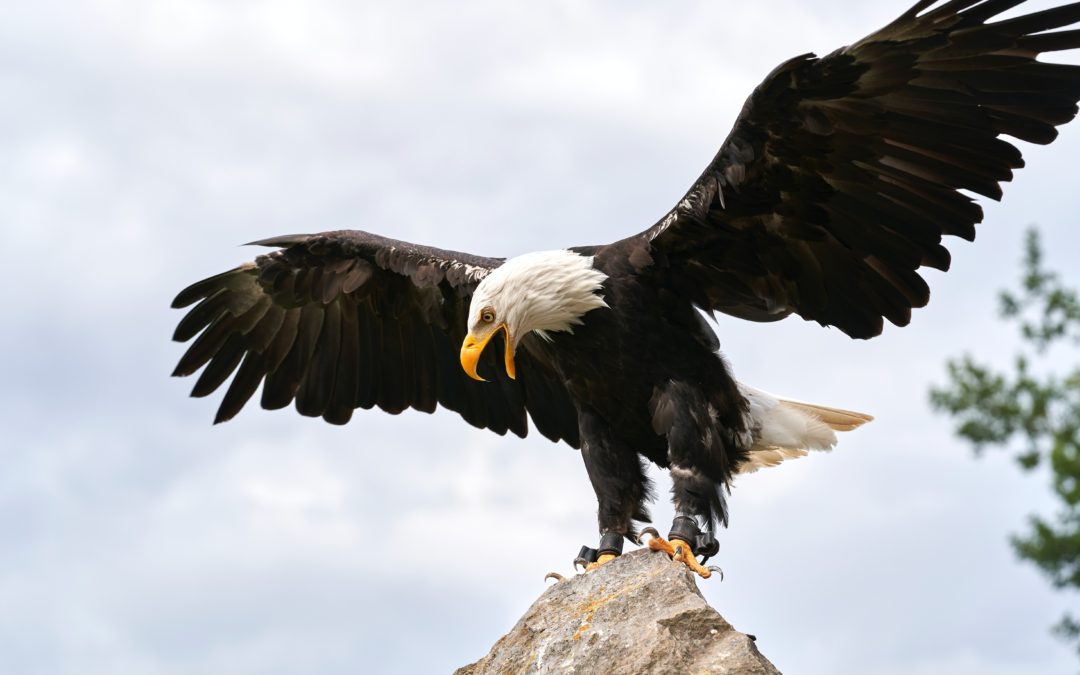Image credit: Ingo Doerrie via Unplash
Background
As the largest raptor in North America, the bald eagle’s striking size and bright white colors make it an easily recognizable bird to many people.
The bald eagle has been the national bird of the United States since 1782, standing for strength, courage, and freedom. It appears on official documents, passports, and currency, and is the most pictured bird across America.
Video and music credit: Canva
The recovery of the bald eagle is one of the greatest success stories in American conservation and is living proof that humans can repair damage to the environment if powerful conservation action is taken. Furthermore, it is proof that the cultural significance or relevance of a particular species can incentivize people to protect it.
In the late 1800s, America was home to approximately 100,000 nesting bald eagles, but the number soon dwindled due to chemical use, habitat destruction, and hunting. As cataloged in Silent Spring by Rachel Carson, the use of harmful pesticides such as DDT (dichlorodiphenyltrichloroethane) had a detrimental effect on birds across the country.
DDT

The bald eagle was no exception, as eating prey contaminated with DDT weakened their offspring’s eggshells. Due to this, the population of bald eagles declined, and the species became critically endangered. In 1972, DDT was banned in the United States. In the years following the ban, the bald eagle and other bird of prey populations slowly recovered.
Photo Credit: Canva
The American bald eagle is protected under the National Emblem Act of 1940. In 1940, Congress passed the Bald Eagle Protection Act, making it illegal to possess, kill, or sell the birds.
To and From the ESA List
In 1978 the bald eagle was put on the endangered species list. Thanks to federal protections and regulations limiting the use of DDT, in 1995 the bald eagle population had recovered enough to move the bird’s status from endangered to threatened.
In 2007 bald eagles were removed from the list completely, as there had been a significant revival of the species’ health.
Today, the bald eagle is not considered threatened or endangered due to habitat conservation and reintroduction efforts that helped to ensure the successful recovery of the bald eagle.
How Things Are Today
Today, the eagle exists as a cultural icon within the United States, with many days of recognition to pay tribute to the majestic bird. National Save the Eagles Day was started in New Jersey in 2015 and is meant to raise awareness about the importance of eagles and recognize the conservation efforts that were put in place to prevent their extinction.
At OneNature, we believe that the cultural significance of an animal can play a role in the conservation of the species. To preserve these cultural icons, we must conserve and protect the environment and ecosystems within which these species exist.
Photo Credit: Canva
Sources:
- https://www.nwf.org/Educational-Resources/Wildlife-Guide/Birds/Bald-Eagle
- https://www.va.gov/opa/publications/celebrate/eagle.pdf
- https://thejamesriver.org/wp-content/uploads/2020/04/Bald-Eagles-and-DDT-Lesson.pdf
- https://www.epa.gov/caddis-vol1/case-ddt-revisiting-impairment
- https://nationaltoday.com/national-save-the-eagles-day/
